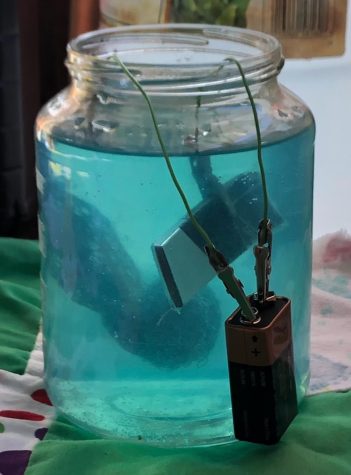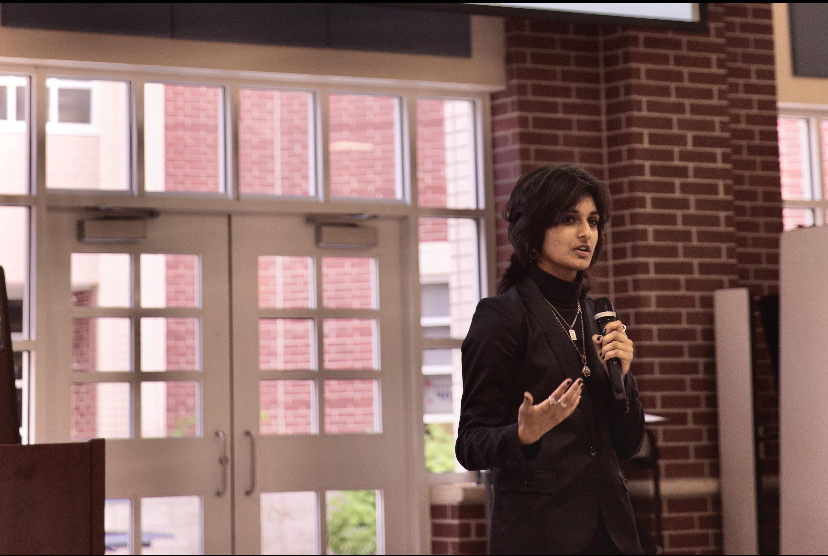Big Hero with Big Innovations
https://www.linkedin.com/in/sohipatel/overlay/1635497767904/single-media-viewer?type=LINK&profileId=ACoAADH9ykABPtct4DFrUCitOHeChvDqusWMIco&lipi=urn%3Ali%3Apage%3Ad_flagship3_profile_view_base%3Bs9zbIOxfTJyOkZMpVtnqjw%3D%3D
August 25, 2022
“And the crowds roared,” usually refers to fan cries from a touchdown or a half court shot, but in Sohi Patel’s case the crowds roared for a much different reason. After working diligently all of last year, Sohiwas announced the victor of the 2022 International Science and Engineering Fair (ISEF). As she continues to share her ideas, knowledge, and charisma there is nothing stopping this young inventor.
In May of 2022 The College Park Academy of Science and Technology sent 13 students to Atlanta, Georgia for a week of jam packed presentations, judging, and fun. Having advanced to this high stage of the competition, every competitor exemplified an amazing talent and skill for innovation and scientific creativity. Sohi, being one of these talented students, was excited for her first ever in-person trip to the convention. She was asked to, not only compete, but to give a presentation to local students about effective scientific communication. The recognition was clearly earned as Sohi continued on to a week of gaining knowledge and victory.

With confidence from this presentation under her belt, the young accolade proceeded to a long day of judging. While this experience could be considered nerve racking, Sohi explains it to be the most beneficial part of her trip.
“The judges have conversations with you, they give you more ideas, and they know a lot about their stuff,” Sohi said.
Sohi was eager for feedback from the expert judges.
“I was taking notes during judging because it was stuff that I wanted to remember for later to continue that project,” Sohi said.
In the higher levels of scientific and engineering competitions, judges are required to have years of experience and sometimes even PHDs in the field they are judging. This is a much needed requirement given the complexity of projects such as Sohi’s.
“They’re like one millimeter cubes and they come together to form different structures or different shapes, and they’re just microrobots. The main idea is programmable matter a smart material that instead of being like wood or like plastic, where you can cut it up or you can melt it down and reshape it but you can’t really change it in real time, it’s more of a dynamic sort of material where you can ask it to change into maybe a pillow and then it’s got the properties of a pillow so it’s soft and it’s flexible and then you want it to be a hammer and it takes the shape of a hammer,” Sohi said.
On the day of her grand victory, Sohi was a ball of nerves. The night before final awards, special awards were announced. Downtrodden, Sohi walked away from the event empty handed, but little did she know she had the greatest award of all headed her way.
“When I wasn’t fourth, third, or second I thought I was done for, because there’s so many people in that category so I was stressed,” Sohi said.
At the end of the final awards ceremony, Sohi was announced first place.
“Everyone else was walking but I ran. I was shocked out of my mind,” Sohi said.
Even months after the event, Sohi is still having a difficult time believing the extent of her accomplishments. With this boost in confidence, she continues to move forward with her project.
In this coming year, Sohi will continue to improve her invention, again working through the ISEF competition. Already she has taken the summer since her victory as an opportunity for further research by interning at MIT and assisting with the design of autonomous weapons for Lincoln Labs. In the next year she will create rigs to automate the construction of her smart technology.
“There’s so much to do: fixing algorithms, fixing code, getting stuff to work as well as I can, but because it’s such a great mission I’m motivated to do it every day,” Sohi said.
Once built, these incredible microrobots hold a world of possibilities from aerospace to everyday practicality. Sohi envisions a world where airplanes can reform while in flight to avoid turbulence or adjust to wind speeds. At the same time, she has more personal goals for her new technology:
“If the floor and all the furniture is made out of this material and then you have more guests coming over and you need more seating, something like that, you could flip a switch on the wall and get another couch [then] as soon as they leave you can change it back to how it was,” Sohi said.
The impact of this new sustainable technology entails a world in which waste and reconstruction is almost obsolete. The inspiration behind this new material composition is the idea of updating world construction beyond 3D printing. While this recent technology allows for personal and programmable design, it is still made of plastic, and, in Sohi’s opinion, is only a medium solution to a much larger problem.
“It’s something that’s immediate recyclability where you don’t really have as much waste as before and people aren’t going to buy things that they need just temporarily as much anymore,” Sohi said.
Past high school, Sohi has even bigger dreams of attending MIT to study material science and engineering as well as continuing to work with defense and aerospace technology. After earning her degree, Sohi hopes to build status in her field before eventually starting her own tech company in which she can design and sell her own products. College Park is keeping an eye on Sohi as she ventures off into a future of her own creation.


MJ • Aug 27, 2022 at 2:34 pm
Nicely done!